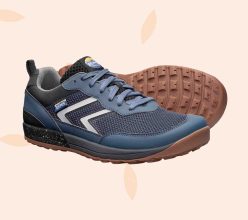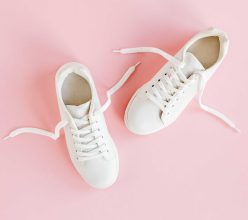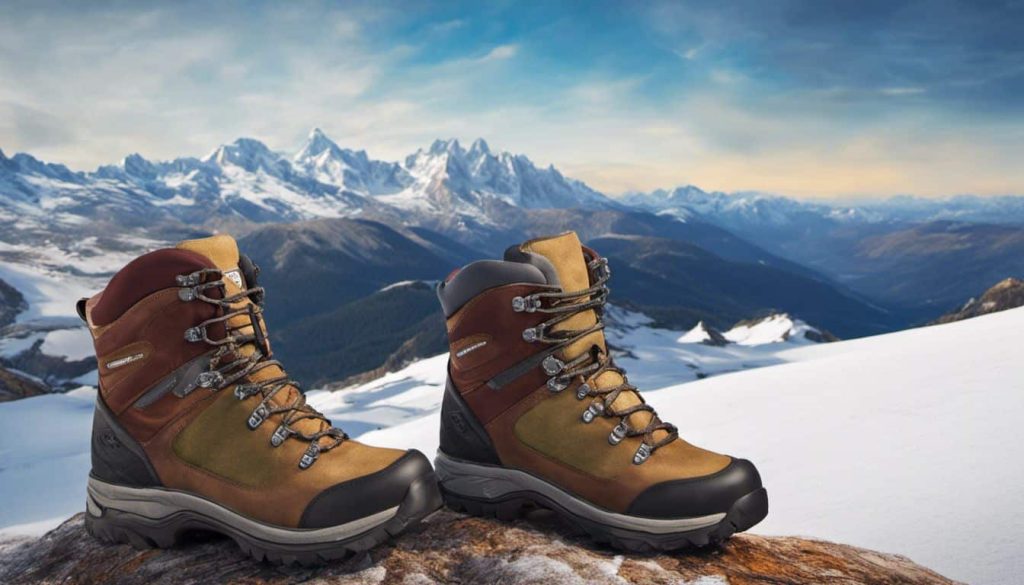
As a vegan hiker for the past 15+ years, I know how important it is to have the right pair of boots. After years of trial and error, I have come up with some handy tips to find the perfect vegan hiking boots.
Whether you’re a committed vegan living a cruelty-free lifestyle, or simply someone looking for an ethical footwear upgrade, this article will help you navigate the sometimes complicated world of vegan hiking boots. In this guide, you’ll learn what kind of materials to look for, how to choose the best fit, plus much more.
Key Takeaways
- High quality vegan hiking shoes are made from eco-friendly, sustainable materials.
- Consider the activities you will use your hiking boots for, the footwear needed for a casual walk is much different than what’s need for a multi-day backpacking trip.
- Factors like durability, fit & comfort, traction & support, andweather protection are key in the selection process.
- Research customer reviews before purchasing to ensure the ideal combination of comfort, style and ethically sourced materials in one product.
How To Choose The Perfect Vegan Hiking Boot
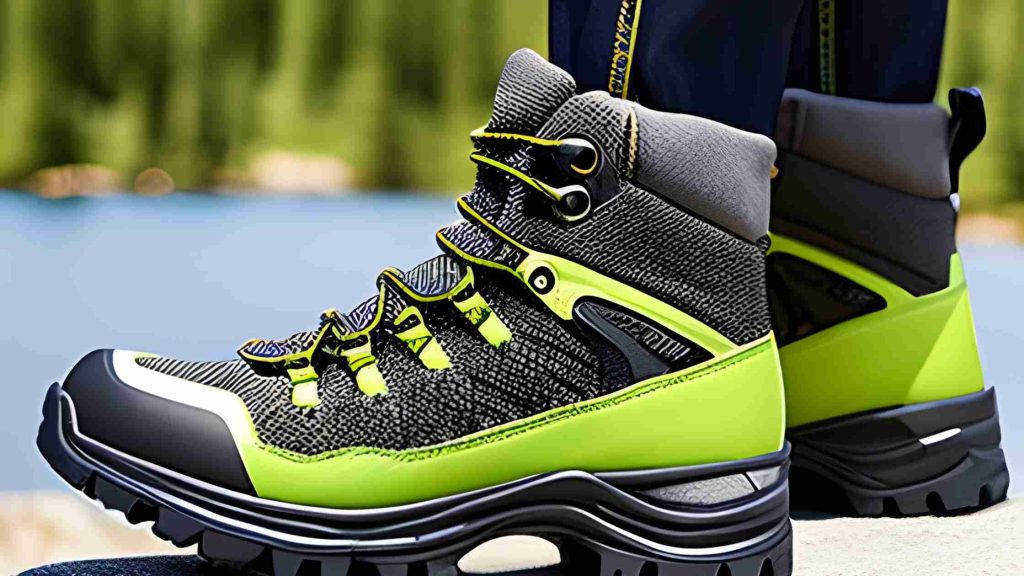
1. Choose the type of vegan hiking boot based on your activities
Day Hiking
Day hiking boots are perfect for short hikes that last a few hours, or for casually wearing for work, school or travel. They provide enough support for exploring well-maintained trails and moderately steep inclines, with decent weather protection. A good pair should be lightweight, sturdy, with a waterproof membrane to keep your feet dry on wet trails.
- Lightweight
- Moderate support and traction
- Waterproof
Backpacking
Backpacking hiking boots are a level up from day hikers, and are designed for multi-day hikes that cover longer distances, with heavier loads. These boots are heavier, with sturdy soles to reduce strain in the ankles, calves, and feet, especially on elevation ascents. They are also water resistant in case you need to cross streams or puddles. Backpacking boots are usually not as versatile as day hiking boots, so you likely won’t be using these for casual wear.
- Stiff, low-profile sole
- Articulated toe
- Insulated & waterproof
- Tall support for ankles and calves
- Rubber sole with heavy lug pattern
Mountaineering & Technical Terrain
Mountaineering boots are designed for much tougher, technical terrain and cold weather. They are well-insulated, with tall, stiff ankle cuffs to provide stability, toe caps to protect your feet from falling rocks and deep lugs on the outsole to give you superior traction on rocky, uneven surfaces. Similar to backpacking boots, these are not always versatile for daily use.
- Significantly taller support for ankles and calves
- Insulated & waterproof
- Toe Caps
- Rubber sole with heavy lug pattern
Trail Running
Trail running shoes are designed for zipping across dirt paths and uneven terrain. They provide extra grip and stability so that you’re always stable, no matter how rocky or unpredictable the route. They are the most lightweight style of vegan hiking shoe and are constructed to give you speed and freedom of movement.
Trail shoes have a more aggressive tread pattern than regular running shoes, as well as extra cushioning to protect your feet from rocks and falling object.
- Lightweight
- Breathable, mesh fabric
- Deep outsole tread
- Foot support
- Low profile design
Trail shoes vs. hiking boots
Ankle support and water protection are two important factors to consider for your hiking adventures — most notably. For those looking for a lightweight and breathable pair of hiking shoes, with less need for ankle or calve support, trail shoes may be ideal.
Generally more flexible than traditional hiking boots, they’ll still provide some stability during light hikes on flat terrain. Hiking boots, however, have been designed specifically with harder trails in mind due to their sturdy construction that delivers superior ankle and arch support; plus waterproof liners keep your feet dry while navigating wet surfaces or through streams.
Overnight Hikes
Hiking at night usually means colder temps and increased risk of falls or slippage. For these reasons, look for a sturdy boot that offers plenty of support and protection, including waterproof uppers, stiff midsoles for more stability on uneven terrain, and lugged outsoles for traction in mud or snow.
Winter Hiking
Look for well-insulated, waterproof boots to keep your feet warm and provide enough traction to prevent slips on icy surfaces.
2. Select your materials
Recycled Polyester
Recycled polyester is made from plastic trash. The process to create recycled polyester involves melting down recycled plastic bottles, spinning them into yarns, and then weaving those yarns into fabric.This material is typically used in the upper of the shoe.
Recycled Nylon
Recycled Nylon is a fabric that is created from post-consumer plastics. It’s made by melting down old plastic and spinning it into new yarn, which can then be woven into fabrics. Its most important benefits are its breathability, the fact that it doesn’t get smelly, and that it’s easy to clean. It’s typically used in the upper of the boot to provide strength and flexibility.
Recycled Rubber
Recycled Rubber used in hiking boots comes from car tires, inner tubes, and other downcycled products. Not only is it environmentally friendly and helps clear trash from landfills, but it also provides shock absorbency, lofted cushioning, water repellency, and resistance to abrasion & wear. It’s typically used on the outsole of the shoe to provide grip and traction.
Organic Hemp
Organic Hemp is a sustainable fiber grown without the use of synthetic chemicals. Hemp is well-suited for hiking because of its breathability, odor-resistance, and moisture-wicking properties.
Microfiber
Microfiber is a synthetic material made from extremely fine fibers that are woven together. Microfiber offers excellent water resistance, cushioning, and breathability for comfortable all-day wear in any weather condition. It’s most commonly used in the upper of the boot for breathability and moisture-wicking properties.
Bio-based Synthetic Leather
Bio-based synthetic leather is created from plant-based sources such as mushrooms or cornstarch, offering the same appearance, texture, and functionality as traditional leather. This durable, waterproof material is used on parts of hiking boots like the upper, toe caps, or heel for enhanced protection and support.
Bamboo
Bamboo is a natural, eco-friendly material with outstanding breathability and moisture-wicking properties, making it ideal for hot climates or extended hikes. It grows quickly without the need for pesticides and requires minimal water for cultivation. Bamboo is commonly used for boot linings or insoles, providing natural antibacterial properties, cushioning, and odor control.
Thinsulate
Thinsulate is produced from a blend of polyester fibers, which are processed into insulation. These fibers are bonded together to optimize warmth and protect against both heat and cold. Additionally, Thinsulate is moisture-wicking, helping to prevent perspiration and maintain dry feet.
Gore-Tex
Gore-Tex is a high-quality waterproof material employed in hiking boots to prevent water ingress while ensuring your feet remain cool and dry.
Synthetic leather
Synthetic leather has been a major player in vegan fashion for years. The advantages of this material is its low price point and durability, especially compared to natural leather.
However, the disadvantages of synthetic leather make it a big no-no from an environmental, health and safety perspective. It is often made from virgin plastics such as polyvinyl chloride (PVC) or polyurethane (PU). The production process is energy intensive and involves hazardous chemicals. The dangerous effects of these chemicals were experienced in the 2023 chemical spill in Palestine, Ohio where 100,000 gallons of polyvinyl chloride was spilled and released into the environment, endangering humans and animals with toxic runoff.
3. Prioritize important performance features
Durability
The durability of the boot directly impacts your comfort and stability, and thus your overall enjoyment. Durable hiking boots are built to withstand rugged terrain and harsh elements, while also protecting your feet against blisters, rocky and slippery surfaces and falling objects.
Breathability
Breathability helps keeps the temperature of your feet cool and ventilated, which helps prevent blisters, bacteria buildup, and odor. For optimal breathability, look for mesh panels or microfiber designed to facilitate air flow around your feet.
Water Resistance
Water resistant fabrics like recycled polyester, synthetic leathers or rubber protects your feet from sweat, rain, and snow. These materials are designed to repel moisture while still allowing air flow, keeping feet dry and comfortable. Manufacturers may also add features like gusseted tongues, waterproof zippers and sealed seams for extra protection from the elements.
Fit and comfort
When it comes to hiking, the right fit and comfort of footwear are key for a successful trek. If your boots don’t fit properly or provide enough cushioning and support, you could be dealing with uncomfortable blisters, sore spots, and foot fatigue on your hike.
Vegan hiking boots often have features like molded midsoles that increase shock absorption and reduce impact, and more supportive material for the ankles and calves for stability on both uphill and downhill paths.
Weight
Weight is an important factor to consider when buying vegan hiking boots. Generally, heavier boots are more durable and provide better support, but lighter boots allow for greater agility and less strain on your feet.
The weight of a vegan hiking boot can range from just over one pound for lightweight styles to three or four pounds for the most rugged designs. In general, look for a boot that strikes a balance between weight and durability.
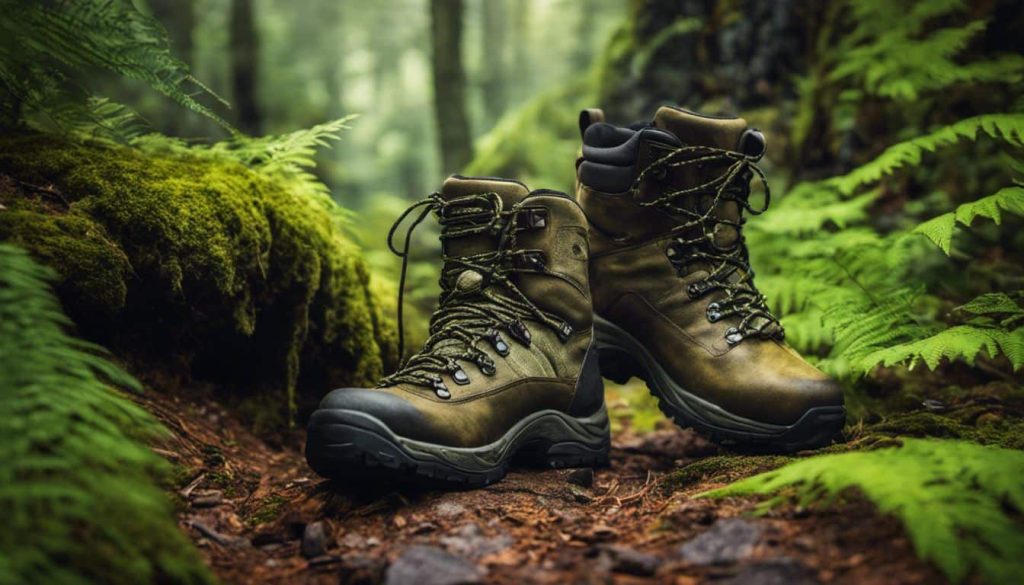
4. Choose the right fit
Length
To ensure the best fit, it is important to measure your foot length and size before purchasing vegan hiking boots. It is also recommended to try on several pairs of boots in order to find the one with the most comfortable fit.
Width
When choosing vegan hiking boots, it is essential to consider the width of your feet as well as the length. Typically, wider feet require a wide size for more comfort and support. If you have narrow feet, then you may opt for a narrower size for a better fit.
Volume
Additionally, it is important to pay attention to the volume of your foot when selecting vegan hiking boots. This refers to how much space there is inside the boot around your foot and ankle area. Too little or too much volume may lead to discomfort while walking or climbing up hills or mountains on your hike.
Arch Support
The arch support provided by vegan hiking boots should also be taken into account when selecting a pair of shoes that fits correctly and comfortably. Boots with adequate arch support will help keep your feet and ankles properly aligned while walking or running over rough terrain during hikes.
Toe Room
Finally, checking for toe room when trying on vegan hiking boots can help ensure that the boots are comfortable. The toe box should have enough space for your toes to move comfortably without rubbing or pinching against the sides of the shoes.
Tips for Trying on Hiking Boots
Try them on later in the day – This will give you a better feel for how the boots will fit as your feet swell throughout the day.
Wear the right socks – Wear the same type of socks that you plan to wear when hiking so that you can get an accurate feel for how the boots will fit.
Walk around the store – Take some time to really walk around, making sure to go up and down stairs or inclines if possible, to get an idea of how the boots handle different terrain and whether they remain comfortable during extended use.
Test the fit on an incline – If possible, try wearing them on a slight incline or hill since this is more representative of what you’ll experience while out on a hike. This can help identify any potential hotspots or areas that may cause discomfort when walking uphill or downhill.
Benefits of Vegan Friendly Boots & Shoes
Enjoy a guilt-free and stylish hiking experience with vegan hiking boots and shoes that are eco-friendly, cruelty-free, durable, high-performance, breathable and comfortable.
Eco-friendly and sustainable
Vegan hiking footwear are made from animal-free, sustainable and eco-friendly materials like Vegetan, Piñatex, hemp cloth, apple skin leather, cork or synthetic microfiber. Thus, no animals are harmed in the production of these materials.
By investing in completely vegan footwear you help take step forward in eliminating animal cruelty from footwear, while also reducing your own carbon footprint on the planet.
Cruelty-free
Vegan hiking gear is produced without the use of any animal-derived materials, so no animals are harmed in the production process.
Opting to go entirely vegan in every aspect of your life – from food to fashion – is a great way to support animal welfare and environmental sustainability.
Breathable and comfortable
The best vegan hiking boots offer breathability and comfort while on the trail because they are made from plant-based or synthetic materials like hemp and recycled polyester that wick away moisture and promote airflow, in order to prevent feet from getting overly hot or sweaty in cold or warm weather.
Finding Vegan Hiking Boots
Research brands that are dedicated to creating vegan footwear, check the labels of materials for anything non-vegan and read customer reviews before making your purchase.
Researching vegan brands
When looking for vegan hiking boots, researching vegan brands is a key step. Vegan brands will be able to provide more information about their materials and production process than larger companies that may not label their products explicitly as vegan.
Many dedicated vegan brands like Vegetarian Shoes, Astral, Baffin, Eco Vegan Shoes, Inov-8, La Sportiva or Lowa offer quality and eco-friendly choices when it comes to selecting the perfect pair of vegan hiking boots.
Additionally, larger companies such as Merrell and REI Co-Op now carry some products that are made without any animal-derived materials like leather gelatine or glues derived from animals.
Checking material labels
When choosing vegan hiking boots, it is important to carefully read all product labels and verify the material composition of the boot. Make sure that it does not contain any leather, gelatine, or animal-derived glues or dyes.
The most common materials found in vegan hiking boots are synthetic suede, recycled plastics, hemp, natural rubber and mesh fabrics––all these will be clearly marked on the label when confirmed to be without animal sources.
Natural materials such as organic cotton and wool should also be avoided due to their potential for being derived from animals unless they are explicitly listed as 100% plant-based on the product labeling.
These manmade materials ensure eco-friendly production processes with minimal environmental impact while mimicking the look of leather as closely as possible without compromising ethical practices.
Reading customer reviews
Customer reviews can be an invaluable source of insight when searching for vegan hiking boots. Reading what other people say about a product can provide comprehensive information on the quality, performance, durability, and comfort that you may not get from elsewhere.
Through customer reviews you can gain insights into key features like waterproofing capabilities or traction and support on difficult terrain. Looking for experiences and feedback from other vegan hikers is especially important; this way you’ll know whether unadvertised components are truly vegan materials or not and determine if a boot would fit your needs as a vegan hiker.
With careful research using customer reviews, you will be sure to find the perfect pair of boots for your next adventure!
Tips for Finding the Perfect Pair
Consider your hiking style and terrain, try on multiple pairs and sizes, test the boots in-store or on a short hike, and consider additional insoles or inserts for customization to help you find the perfect vegan hiking boots!
Consider your hiking style and terrain
When it comes to choosing the perfect pair of vegan hiking boots, considering your hiking style and terrain is key. The type of adventure you embark on and the environment in which you’re trekking will dictate what kind of boot you need, as different terrains and activities require specific features.
For instance, if you go out for a technical hike, waterproofing may be important whereas extra ankle support may be necessary if the trail has rough patches. On the other hand, trekking in a dry area could mean that lightweight shoes would suit better than heavy-duty ones with thick insulation.
Therefore understanding your needs is essential – using mismatched boots can lead to discomfort or even injuries during hikes so make sure they can meet all conditions that come their way!
Try on multiple pairs and sizes
When it comes to finding the perfect pair of vegan hiking boots, trying on multiple pairs and sizes is essential. Having a snug fit that does not rub or cause discomfort is paramount for preventing foot problems during hikes.
Different styles can also have slight variations in sizing, even within the same brand; those looking for vegan footwear should always try on all their potential options before buying.
In addition to finding an ideal fit lengthwise, test walking around in boots and going up and down hills where possible—this will tell you how supportive they are during activities like hiking or trail running.
Test the boots in-store or on a short hike
Trying on vegan hiking boots before making a purchase is essential in finding the perfect pair for your needs. Not only does this allow you to assess size and fit, but it also gives you an opportunity to test traction and feel the interior of the shoes.
Good-fitting shoes should be comfortable and snug but not overly tight; they should leave enough room in the toe box so that there is no pressure or squashing feeling. Walking around for a few minutes allows your feet to adjust any ankle flexion and helps determine whether these are right for you.
Wearing ill-fitting footwear can lead to frustrated hikes, blisters, shortening or deforming toes over time – all unpleasant experiences which could have been avoided by taking some extra care when choosing your footwear..
Consider additional insoles or inserts for customization
When choosing vegan hiking boots, it’s important to consider purchasing additional insoles or inserts for customization. Insoles that come with most hiking boots are often made from cheap foam and don’t provide adequate support or protection for the feet.
Adding in custom insoles can provide greater arch support and better heel stabilization, which eliminates discomfort during long hikes. The Superfeet Green insole is a popular option recommended by hikers of all levels – they offer cushy or firm support depending on individual needs and can be easily swapped out as needed throughout the course of a hike.
Additionally, longer-term users benefit from lasting relief against conditions such as foot fatigue, plantar fasciitis, bunions and arthritis due to improved arch support and cushioning offered by replacing standard foam insoles with custom ones.
Caring for Vegan Hiking Boots
To ensure your vegan hiking boots last for years to come, it is important to practice proper cleaning and maintenance procedures, replace worn-out parts when necessary, and allow the boots a chance to rest in a dry area with good air flow.
Cleaning and maintenance
Maintaining hiking boots means taking care of them so they will last a long time. Properly cared for vegan hiking boots, with special attention given to cleaning and maintenance, will increase the longevity of your beloved pair.
It is important to brush off dust or dirt from the outside of your vegan boot with a soft brush after each hike as this helps protect against wear and tear. Heavy mud should also be rinsed off using water as soon as possible to prevent it getting stuck in any crevices on the soleplate.
The inside should then be shaken out if necessary, and wiped clean with a damp cloth if need be too. Periodical thorough cleaning can help preserve your vegan hikers: use cold or lukewarm water combined with some elbow grease and perhaps even a bit of detergent specifically designed for outdoor footwear like Nikwax Tech Wash or Granger’s Performance Wash Plus, which are both cruelty-free formulas that effectively breakdown built up sweat residue without affecting waterproofing coatings or bindings on materials used in most modern shoes such us GORE-TEX® membranes or leather fabrics made without animal products like high grade 3D knit mesh liners that are becoming increasingly popular among vegans looking for technical performance while still upholding their commitment to ethical values.
Replacing worn-out parts
Regularly caring for vegan hiking boots is important to ensure their high-performance and longevity on the trail. Regular maintenance may include cleaning, replacing worn-out parts like laces, insoles and outsoles, and proper storage.
Replacing these key components can be an effective way of boosting boot performance by improving comfort, traction, and durability – helpful for taking on tougher hikes. When looking for new laces to replace old or worn pairs, consider the material used in order to keep them durable yet lightweight.
Investing in supportive insoles with cushioning additives such as gel or foam can help improve arch support while tackling steep ascents or descents. Similarly when purchasing replacements for soles look out for those with better shock absorbing qualities giving additional grip over difficult terrains.
Proper storage
Storing your vegan footwear correctly is essential for preserving their life and performance over time. You should store them in a dry and ventilated place where they won’t be subject to extreme temperatures or direct sunlight. If they become too warm bacteria and mold growth can occur, so proper airflow and ventilation is key. Additionally, using shoe trees or stuffing newspaper inside the boot will help keep its shape during storage.
FAQs
Get your questions answered with this list of common vegan-related queries. Read on to find out more!
Are Arcteryx shoes vegan?
Not all Arcteryx shoes are vegan, but specific models like the ACRUX TR GTX Boot are indeed vegan.
Is Gore-Tex vegan?
Gore-Tex is a popular vegan waterproofing and insulation technology that is 100% cruelty-free and safe for those following a vegan lifestyle.
The core component of Gore-Tex’s construction is an expanded polytetrafluoroethylene (ePTFE) material made from porous film. This layer prevents liquid water from entering the shoe while still allowing water vapor to escape.
This ePTFE layer also has advanced durability properties; it’s highly abrasion resistant as well as tear and temperature resistant so your feet stay dry even during intense activity on tough terrain.
Is Salomon vegan?
The Salomon product line is not completely vegan, but they do carry specific vegan options like the XA, Speedcross and Cross Hike Mid GTX, made using water-resistant mesh uppers, breathable lining and durable synthetic soles.
Are vegan shoes waterproof?
Some vegan shoes are waterproof, and some are not – this varies from shoe to shoe depending on what materials they are made from. Recycled polyester, rubber and hemp are water resistant, however vegan materials like canvas or vegan leather may not be.
Is vegan leather shoes waterproof?
Vegan leather shoes can be waterproof depending on the materials used. They have to be constructed with a water-resistant material, such as synthetic or PU leather, which are vegan alternatives to natural leather.
The shoe must also feature coatings like water repellent or breathable membrane that are commonly found in traditional hiking and mountaineering boots which provide additional protection against liquids.
Are vegan boots lower quality?
In the past, vegan boots may have been associated with lower quality, but advancements in materials and technology has allowed brands to create durable and high-performance products that are fully vegan.
Brands such as Will’s Vegan Store and Icebug offer specially crafted vegan hiking boots that can withstand outdoor activities and extreme weather without sacrificing comfort or utility.
With features like waterproof membranes, shock absorbing midsoles for extra cushioning, deep traction for grip on varying terrain types, breathable linings to keep moisture away from the feet, arch support systems for better stability – these top-of-the line vegan boot selections are designed to last.
Do vegan boots cost more?
The answer to this question depends on the type of boots and the brand. Generally, vegan boots tend to be a bit more expensive than non-vegan counterparts since high quality materials are used in place of leather.
However, prices vary greatly among vegan hiking boots brands, ranging from $100-$160. Popular brands like La Sportiva offer reasonable priced options at under $140, whereas Icebug or Will’s Vegan Store tend to cost slightly more with an average price of up $165 for their products.
Conclusion
When making the decision to purchase vegan footwear, it’s important for consumers to be mindful of their individual needs. Many different types of boots are available on the market that provide comfort, support and traction in a variety of terrains and conditions.
Research vegan brands, read customer reviews, try on multiple pairs in store or even take a short trial hike before purchasing your perfect pair of plant-powered kicks! Vegan options are steadily growing in popularity due to their durability, quality performance, and environmental sustainability — there is no need for compromise with ethical purchases today!
Fair Trade Finder makes product and service recommendations, based on thorough research and comparison analysis. Read more.




